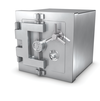Hide information in images using Steg
|
Even before the revelations by Edward Snowden, many users worried about how to effectively protect their private databases stored locally or in the cloud. Since minor weaknesses became apparent in the well-known TrueCrypt encryption software in a large-scale audit [1], many people have been searching for alternatives. Steganography is a little-known technology that not only protects data from prying eyes but also obfuscates its very existence.
Basics
The technique of steganography relies on hiding sets of data in a carrier medium. An image or audio file in which the message is embedded in the form of a text file is usually used for this purpose. With steganographically modified carrier media (unlike with encrypted files or encrypted file containers), it isn't usually possible for outsiders to detect that it contains a message – this significantly reduces the risk of a possible attack.
Some steganographic tools offer an extra option for particularly cautious individuals; you can, for example, encrypt the data before embedding it and add password protection. Then, the embedded content cannot be read by the attacker even after a successful attack on the data carrier and a second cryptographic attack would be needed.
[...]
Buy this article as PDF
Pages: 4
(incl. VAT)






